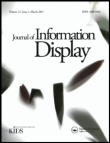
Journal of Information Display
Scope & Guideline
Pioneering insights in electrical engineering and materials science.
Introduction
Aims and Scopes
- Display Device Engineering:
Research on the design, fabrication, and optimization of various display technologies, such as OLEDs, LCDs, and microLEDs, focusing on improving efficiency, brightness, color accuracy, and resolution. - Materials Science for Displays:
Exploration of new materials and compounds that can be used in display technologies, including phosphors, quantum dots, and polymers, with an emphasis on their synthesis and characterization. - Optoelectronic Applications:
Development of optoelectronic devices related to display technology, such as sensors, drivers, and transistors, leveraging advances in semiconductor and nanotechnology. - User Experience and Performance Analysis:
Studies investigating the human factors associated with display technologies, including visual perception, comfort, and usability, aiming to enhance user experience. - Emerging Display Technologies:
Focus on novel display concepts, such as augmented reality (AR), virtual reality (VR), and holographic displays, including theoretical and experimental approaches.
Trending and Emerging
- Quantum Dot and Hybrid Displays:
Research on quantum dot technologies and hybrid organic-inorganic display systems is on the rise, driven by their potential to improve color gamut and energy efficiency in displays. - Flexible and Stretchable Electronics:
The development of flexible and stretchable display technologies is increasingly emphasized, reflecting a growing market demand for wearable and versatile display solutions. - Augmented Reality and Virtual Reality Displays:
There is a notable increase in research focusing on display technologies for AR and VR applications, emphasizing the need for advancements in resolution, field of view, and user interaction. - Sustainability in Display Materials:
Emerging interest in sustainable and environmentally friendly materials for display applications is becoming prevalent, as researchers seek to reduce the ecological impact of display manufacturing. - Artificial Intelligence in Display Technologies:
The integration of artificial intelligence and machine learning in optimizing display performance and user experience is gaining momentum, showcasing the convergence of technology and innovation.
Declining or Waning
- Traditional LCD Technologies:
Research related to conventional LCD technologies has seen a decrease as newer display technologies such as OLED and microLED gain traction, leading to reduced focus on improving traditional LCD performance. - Basic Theoretical Studies:
There appears to be a waning interest in purely theoretical studies without practical applications, as researchers increasingly prioritize experimental validation and real-world implications of their findings. - Low-Resolution Display Systems:
The focus on enhancing low-resolution display systems is declining, likely due to the industry's shift toward high-resolution and high-definition displays that meet modern consumer expectations.
Similar Journals
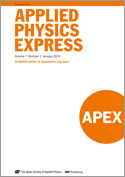
Applied Physics Express
Shaping the Future of Applied Physics TogetherApplied Physics Express, published by IOP Publishing Ltd, is a leading journal that focuses on the rapid dissemination of research in applied physics, aimed at both academia and industry professionals. Operating from Japan, this prestigious journal features a broad scope within the domains of engineering and physics and astronomy, earning a significant place in the research community, as evidenced by its Q2 ranking in both disciplines for 2023. With a commitment to excellence, Applied Physics Express provides a platform for authors to share their innovative findings, promoting collaboration and advancement in the field. Its impact is further highlighted by its solid performance in Scopus rankings, featuring prominently within the engineering and physics categories. Although the journal does not currently operate under an open access model, it is dedicated to ensuring that high-quality research is accessible to its readers. Researchers, students, and professionals can find invaluable insights and cutting-edge studies within its pages, making it an essential resource for those engaged in applied physics and its interdisciplinary applications.

OPTICS AND SPECTROSCOPY
Fostering Excellence in Optical Science and EngineeringOptics and Spectroscopy is a pivotal peer-reviewed journal published by Pleiades Publishing Inc, focusing on the intricate fields of atomic and molecular physics, as well as optics. Established in 1972, and enjoying a legacy of convergence periods that reinforce its commitment to the evolving landscape of these scientific domains, the journal aims to disseminate high-quality research that advances our understanding of light-matter interactions, electronic materials, and spectroscopic techniques. Despite its current Q4 categorization in both the Atomic and Molecular Physics and Electronic, Optical and Magnetic Materials fields, with corresponding Scopus rankings reflecting its developing influence, the journal remains a valuable resource for researchers and professionals seeking to publish their findings, explore new methodologies, and connect with a community dedicated to innovation in optics. Although there is currently no open access option, the journal's expansive readership and its stability in publication over the decades make it an important platform for both established and emerging researchers in the field.
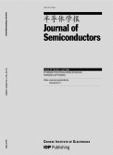
Journal of Semiconductors
Fostering collaboration in cutting-edge semiconductor research.Journal of Semiconductors, published by IOP Publishing Ltd in the United Kingdom, is a leading scholarly journal that has established itself as a premier platform for disseminating high-quality research in the fields of condensed matter physics, electrical and electronic engineering, and materials chemistry. Since its inception in 2009, the journal has featured research articles that delve into the fundamental and applied aspects of semiconductor technologies, making significant contributions to advancements in electronic, optical, and magnetic materials. The journal boasts an impressive Q1 ranking in several categories, including Condensed Matter Physics and Electronic, Optical and Magnetic Materials, reflecting its influential role in shaping contemporary research. With a dedicated audience of researchers, professionals, and students, it aims to foster collaboration and innovation in this dynamic field. Although it operates under a traditional access model, the journal offers various publication options that ensure the visibility and impact of its articles. Through its rigorous peer-review process and commitment to excellence, the Journal of Semiconductors continues to be an invaluable resource for those seeking to stay at the forefront of semiconductor research and technology.

Journal of Semiconductor Technology and Science
Exploring the Depths of Semiconductor ScienceThe Journal of Semiconductor Technology and Science, published by the IEEK PUBLICATION CENTER, serves as a vital platform for advancing the field of semiconductor technology and materials science. With its ISSN 1598-1657 and E-ISSN 2233-4866, this journal has been pivotal since its inception in 2005, continuing to shed light on innovative research until 2024. Although currently classified in the Q4 category for both Electrical and Electronic Engineering and Electronic, Optical and Magnetic Materials, it remains a crucial resource for those in industry and academia alike, providing in-depth analyses and findings that explore the complexities of semiconductor applications. Researchers and professionals will find value in its comprehensive articles that address current trends and future directions in semiconductor technologies. This open-access journal, published in South Korea, is positioned to foster collaboration among students, professionals, and leading researchers in the ever-evolving technology landscape.
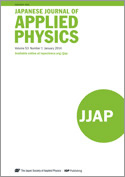
JAPANESE JOURNAL OF APPLIED PHYSICS
Innovating Solutions through Rigorous ResearchThe Japanese Journal of Applied Physics is a premier publication in the field of applied physics, offering a platform for researchers and professionals to present their findings and innovations. Published by IOP Publishing Ltd, this esteemed journal has been active since 1963 and continues to contribute significantly to the understanding and advancement of applied physics across diverse applications. The journal is recognized for its rigorous peer-review process and high-quality publications, evidenced by its 2023 ranking of Q2 in Engineering (Miscellaneous) and Q3 in Physics and Astronomy (Miscellaneous). With an accessible ISSN of 0021-4922 and E-ISSN 1347-4065, the journal cultivates a global readership, fostering collaboration and innovation within the scientific community. Although the journal does not currently offer open access options, its valuable insights into the latest technological advancements and theoretical developments remain crucial for students, researchers, and industry professionals alike. By bridging the gap between fundamental physics and practical applications, the Japanese Journal of Applied Physics plays a vital role in shaping the future of applied sciences in Japan and beyond.

Chinese Journal of Liquid Crystals and Displays
Exploring Innovations in Liquid Crystal TechnologyThe Chinese Journal of Liquid Crystals and Displays, published by SCIENCE PRESS, serves as a vital platform for researchers and professionals in the fields of electronic, optical, and magnetic materials as well as instrumentation and signal processing. With an ISSN of 1007-2780 and an E-ISSN of 2097-3217, this journal offers a unique perspective on advancements in liquid crystal technology and display innovations, reflecting the dynamic growth of this area of study since its convergence in 2015 through to 2024. Despite currently occupying a Q4 quartile ranking in multiple categories, researchers and industry practitioners will benefit from its publication of cutting-edge research, comprehensive reviews, and insightful discussions. Although not an open-access journal, this publication remains essential for those seeking to expand their knowledge and stay abreast of emerging trends in liquid crystals and display technologies, particularly from a Chinese perspective.

Journal of Optoelectronic and Biomedical Materials
Driving Discoveries in Biomedical Material ScienceJournal of Optoelectronic and Biomedical Materials (ISSN: 2066-0049) is a peer-reviewed academic journal published by the renowned VIRTUAL INSTITUTE OF PHYSICS, dedicated to advancing research in the interdisciplinary fields of optoelectronics and biomedical materials. This journal aims to provide a platform for researchers, professionals, and students to disseminate their findings on innovative materials and technologies that harness optical and electronic properties for biomedical applications. With an increasing significance in medical diagnostics, therapeutic approaches, and advanced materials science, the Journal of Optoelectronic and Biomedical Materials underscores the importance of facilitating collaboration among scientists from diverse fields. While currently operating under a traditional access model, the journal aspires to enhance global accessibility to cutting-edge research contributions that will drive the future of technology in healthcare and biotechnology. As a growing reference point in its domain, it encourages submissions that can advance these crucial scientific areas.
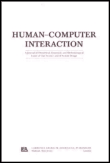
HUMAN-COMPUTER INTERACTION
Advancing Interactions Between Humans and TechnologyHUMAN-COMPUTER INTERACTION is a premier academic journal published by Taylor & Francis Inc, dedicated to the interdisciplinary field of HCI, which explores the dynamic interactions between humans and computers. With its ISSN 0737-0024 and E-ISSN 1532-7051, the journal maintains a strong presence within the academic community and is recognized for its significant impact, holding a commendable impact factor that underscores its relevance. Ranked in the Q1 category for both Applied Psychology and Human-Computer Interaction, it occupies a critical position in Scopus rankings, listed as #15 in Applied Psychology and #11 in Computer Science, Human-Computer Interaction, placing it in the top 6% of relevant fields. Covering a broad spectrum of topics from usability studies to user experience design, the journal aims to facilitate innovative research and provide insights that bridge theoretical frameworks and practical applications. Published since 1985 and continuously evolving, HUMAN-COMPUTER INTERACTION remains an essential resource for researchers, professionals, and students eager to contribute to and benefit from advances in understanding how technology can effectively serve human needs.
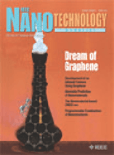
IEEE Nanotechnology Magazine
Delivering Cutting-Edge Research for a Nanotech RevolutionIEEE Nanotechnology Magazine is a premier publication dedicated to the dissemination of cutting-edge research and developments in the rapidly evolving fields of nanotechnology, electrical engineering, and mechanical engineering. Published by the esteemed IEEE-Institution of Electrical and Electronics Engineers Inc., this magazine strives to bridge the gap between complex scientific research and practical applications, catering to a diverse audience of researchers, professionals, and students alike. With an impact factor that reflects its growing reputation, the magazine is currently ranked in the Q2 quartile for both Electrical and Electronic Engineering and Mechanical Engineering, and Q3 in Nanoscience and Nanotechnology, showcasing its significant contribution to these fields since its inception in 2007. The publication does not offer open access options, indicating a traditional subscription model that maintains the integrity and quality of its peer-reviewed articles. With its headquarters in the United States, IEEE Nanotechnology Magazine is an essential resource for keeping abreast of innovations that have the potential to transform technology and society as we know it, emphasizing the importance of nanotechnology in contemporary research and application.
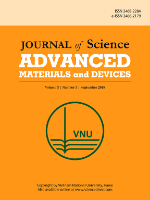
Journal of Science-Advanced Materials and Devices
Innovating for Impact: Your Gateway to Advanced MaterialsJournal of Science-Advanced Materials and Devices is a leading open-access journal published by Vietnam National University, dedicated to advancing the field of materials science through cutting-edge research and innovative developments. Since its inception in 2016, this journal has become a pivotal platform for sharing insights and discoveries in various subfields, including biomaterials, ceramics and composites, and electronic, optical, and magnetic materials. With impressive quartile rankings, including Q1 across multiple categories in 2023, and a notable Scopus ranking placing it in the top 15th percentile for ceramics and composites, it highlights the journal’s influence and prestige within the global academic community. Open Access since its launch, the journal aims to facilitate unrestricted dissemination of scholarly work, empowering researchers, professionals, and students to engage with the latest advancements. The Journal of Science-Advanced Materials and Devices is vital for those seeking high-quality contributions that influence both theoretical understanding and practical applications in the ever-evolving landscape of materials science.